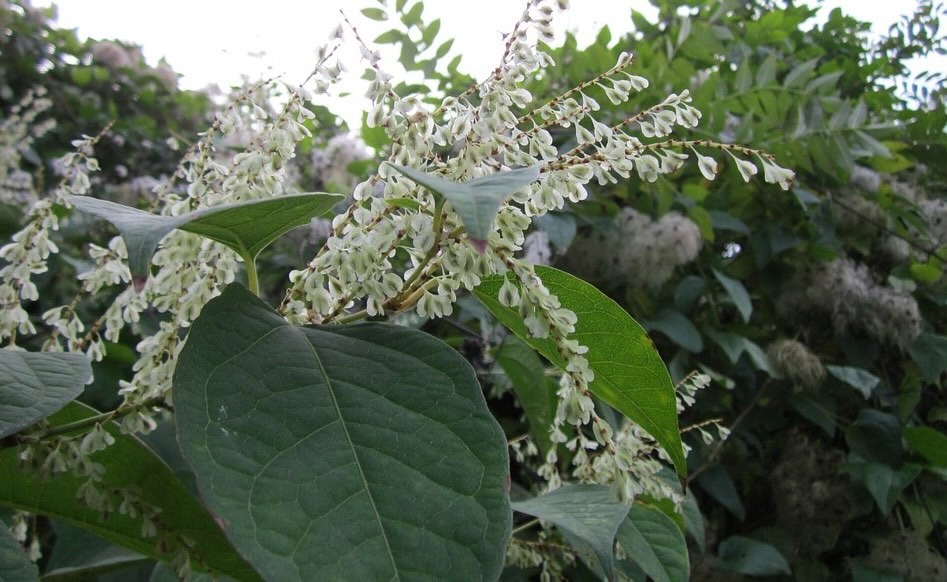
10 Mistaken Plants That Look Like Japanese Knotweed
Japanese knotweed is often confused with other plants due to its distinctive appearance, but each lookalike has unique characteristics that can help differentiate it.
The five plants most often mistaken for Japanese knotweed are Himalayan Balsam, Russian Vine, Bindweed, Bamboo, and Broadleaf Dock.
Accurate identification is critical to avoid unnecessary control measures or legal issues associated with Japanese knotweed.
Below is a detailed explanation of how each commonly mistaken plant differs from Japanese knotweed, including its unique features and growth habits.
Himalayan Balsam (Impatiens Glandulifera)
Himalayan Balsam resembles Japanese knotweed due to its hollow stems and rapid growth rate, which can confuse even experienced gardeners.
The critical difference lies in its pink, orchid-like flowers, significantly different from Japanese knotweed’s small, creamy white flower clusters.
While Japanese knotweed has broad, heart-shaped leaves with a pointed tip, Himalayan balsam’s leaves are more elongated and serrated.
Himalayan balsam typically grows in moist environments near water bodies and reaches up to two metres tall. In contrast, Japanese knotweed forms dense clumps and can grow up to three metres high.
Misidentifying these two can lead to incorrect management strategies since Himalayan balsam is less aggressive and does not have the same invasive characteristics.
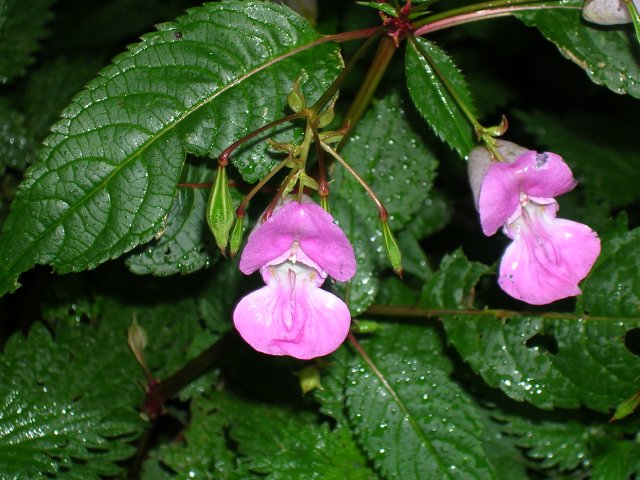
Russian Vine (Fallopia Baldschuanica)
Russian Vine, also known as “Mile-a-minute,” is frequently mistaken for Japanese knotweed due to its heart-shaped leaves and fast growth.
Unlike Japanese knotweed, which has an upright growth habit, Russian vine is a climbing plant that wraps around structures or other vegetation.
Russian vine’s small, white to pink flowers are spread out along the vine rather than forming dense clusters. Its stems are flexible and twining, whereas knotweed’s are sturdy, hollow, and bamboo-like.
Misidentifying Russian vine as knotweed can result in the improper use of herbicides, which may damage desirable plants around it.
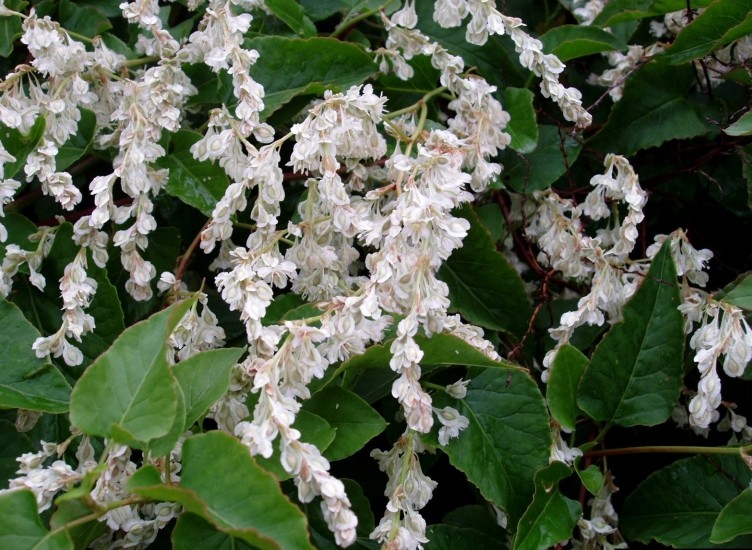
Bindweed (Convolvulus Arvensis)
Bindweed is often confused with Japanese knotweed because of its heart-shaped leaves, which can resemble the juvenile leaves of knotweed.
Japanese knotweed has small, clustered flowers, whereas bindweed has trumpet-like flowers that are available in white or pink.
Bindweed leaves are more elongated and can appear wavy, unlike the broader and more symmetrical knotweed leaves. Bindweed is a dense herbaceous perennial known as Ground Morning Glory or Silver Bush.
Bindweed also has a twining growth pattern, wrapping around other plants and structures, while Japanese knotweed grows upright and forms dense clumps.
Effective control methods differ significantly between these two plants, as bindweed is a perennial with deep roots and requires different treatment strategies.
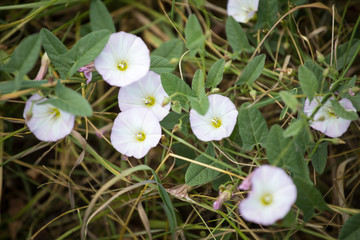
Bamboo (Phyllostachys Aurea)
Bamboo is a common lookalike of Japanese knotweed due to its woody, cane-like stems and rapid growth.
Despite these similarities, bamboo differs significantly in several ways. Bamboo stems are solid, not hollow, like those of Japanese knotweed, and they do not have the distinct purple speckling seen on knotweed stems.
Bamboo leaves are typically longer and narrower than the heart-shaped leaves of knotweed. Bamboo grows in clusters of tall canes and often forms a more orderly clumping pattern, while knotweed forms dense, bushy thickets.
Confusing bamboo with knotweed can lead to unnecessary legal concerns or removal efforts, especially since bamboo is a popular ornamental plant.

Houttuynia Cordata
Houttuynia Cordata (Chameleon Plant/Fishmint) and Japanese Knotweed can look similar but have fundamental differences.
When crushed, Houttuynia has smaller, heart-shaped leaves with variegated colours (green, red, yellow, cream) and a fishy odour. It grows as low ground cover, reaching 1-2 feet, and spreads less aggressively.
Japanese Knotweed has larger, broad green leaves with a flat base and no odour. It grows up to 10 feet tall, spreading rapidly through deep rhizomes and forming dense, invasive thickets that can cause structural damage.
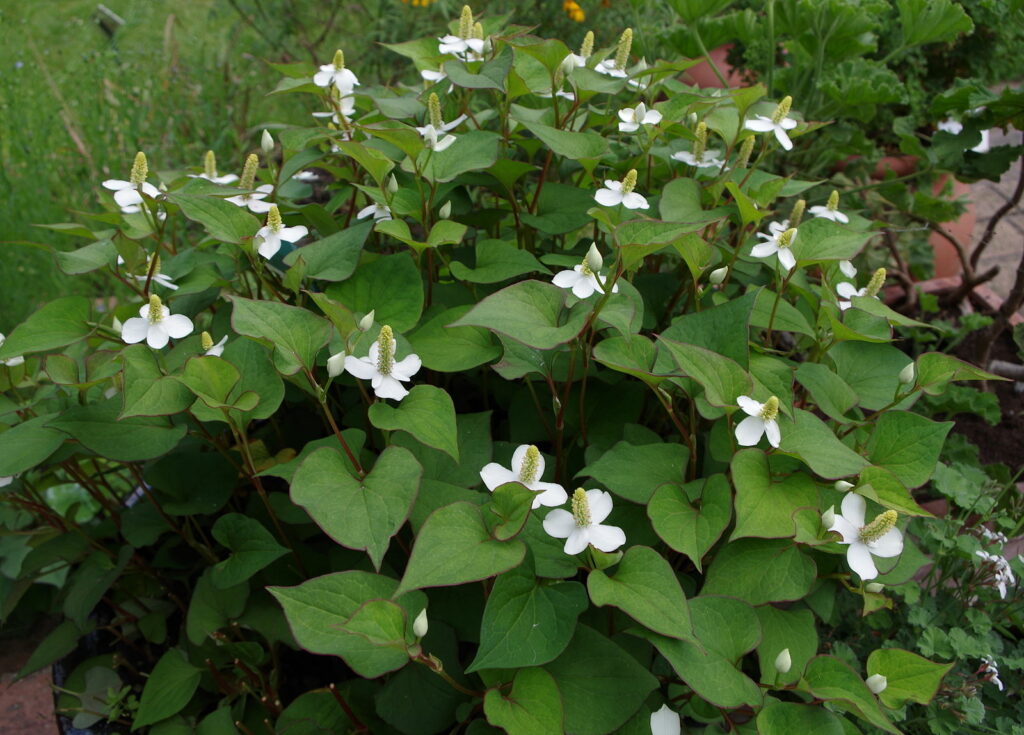
Himalayan Honeysuckle
Himalayan Honeysuckle (Leycesteria formosa) and Japanese Knotweed may appear similar at first glance but have distinct differences.
Himalayan Honeysuckle has oval, pointed leaves that are bright green and arranged oppositely along the stems. It produces hanging clusters of white flowers with deep purple-red bracts, followed by purple-red berries. The plant grows as an arching shrub, reaching 3-6 feet in height, and spreads moderately without being invasive.
Japanese Knotweed, in contrast, has broad, shield-shaped green leaves with a flat base. It produces small, creamy-white flowers and has bamboo-like, hollow stems with red spots. It grows up to 10 feet tall and spreads aggressively through deep rhizomes, forming dense thickets that can cause significant ecological and structural damage.
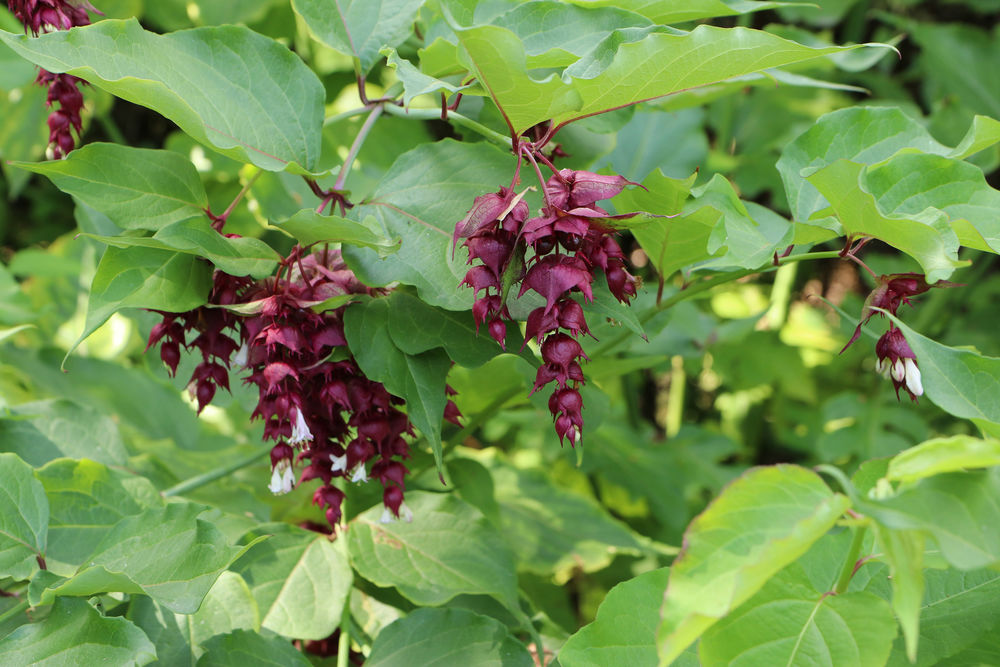
Red Bistort (Persicaria Amplexicaulis)
Red Bistort has lance-shaped leaves and a stem structure that can be mistaken for Japanese knotweed.
The red, pink, or white flower spikes of red bistort are more colourful and noticeable than the tiny, white knotweed clusters, making them easy to identify.
The leaves of Red Bistort are narrower and more extended, lacking the broad, heart-shaped appearance of knotweed leaves.
Red Bistort also grows in less dense clusters and does not spread as aggressively, making it less of a concern for property owners or gardeners.
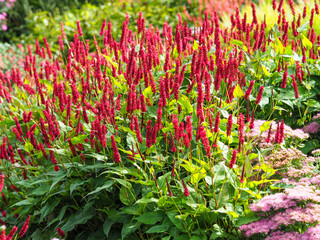
Dogwood
Dogwood (Cornus Sanguinea) is often mistaken for Japanese Knotweed due to similarities in leaf shape and growth patterns. Dogwood leaves are typically oval to lance-shaped with distinct veining and smooth edges, turning vibrant red, orange, or purple in the fall. In contrast, Japanese Knotweed has broad, shield-shaped leaves with a flat base and pointed tip, which remain uniformly green throughout the year.
Dogwoods are shrubs or small trees that grow upright to heights of 6 to 15 feet and are often used in landscaping for their attractive flowers and colourful stems. On the other hand, Japanese Knotweed is an herbaceous perennial that grows in dense thickets up to 10 feet tall and spreads aggressively via rhizomes, often outcompeting native plants. While Dogwoods produce clusters of showy flowers and sometimes have striking red or yellow stems, Japanese Knotweed features small, creamy-white flowers and bamboo-like, hollow stems with red speckles.
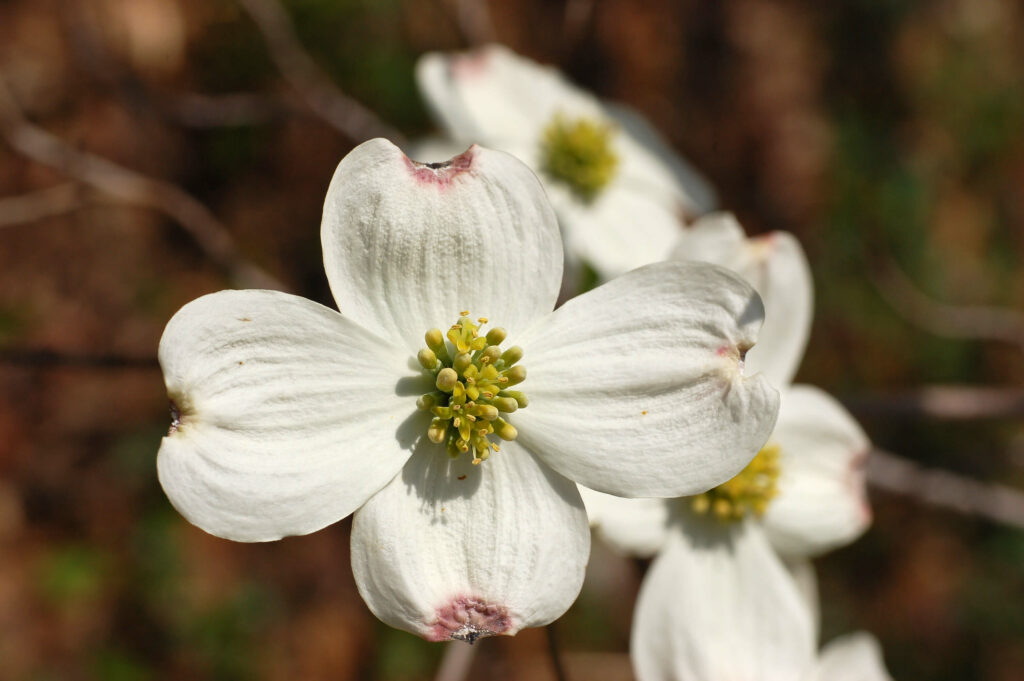
Lilac (Syringa Vulgaris)
Lilac has large, woody stems and can grow to a similar height as Japanese knotweed, leading to frequent misidentification.
Lilac is distinguishable by its large clusters of purple or white flowers, which are very different from knotweed’s small, white flowers.
The leaves of Lilac are broader and have a more rounded base compared to the more triangular, heart-shaped leaves of knotweed.
Unlike knotweed, Lilac is a woody shrub that does not die back to the ground each winter.
Misidentifying Lilac as Japanese knotweed could lead to removing a valuable ornamental plant unnecessarily.
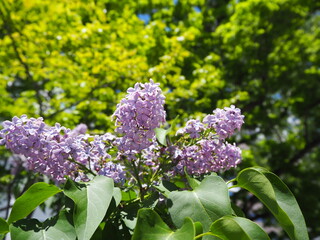
Broadleaf Dock (Rumex Obtusifolius)
Broadleaf Dock is another plant that can be mistaken for Japanese knotweed due to its broad, heart-shaped leaves and reddish stems.
Broadleaf Dock produces a distinct flowering spike that differs from knotweed’s clustered white flowers.
The leaves of Broadleaf Dock are also more crinkled and elongated, and the plant tends to have a more upright growth habit.
Broadleaf Dock usually grows in less dense clusters and is not as invasive as Japanese knotweed, so mistaking it for knotweed could lead to the application of inappropriate herbicides.
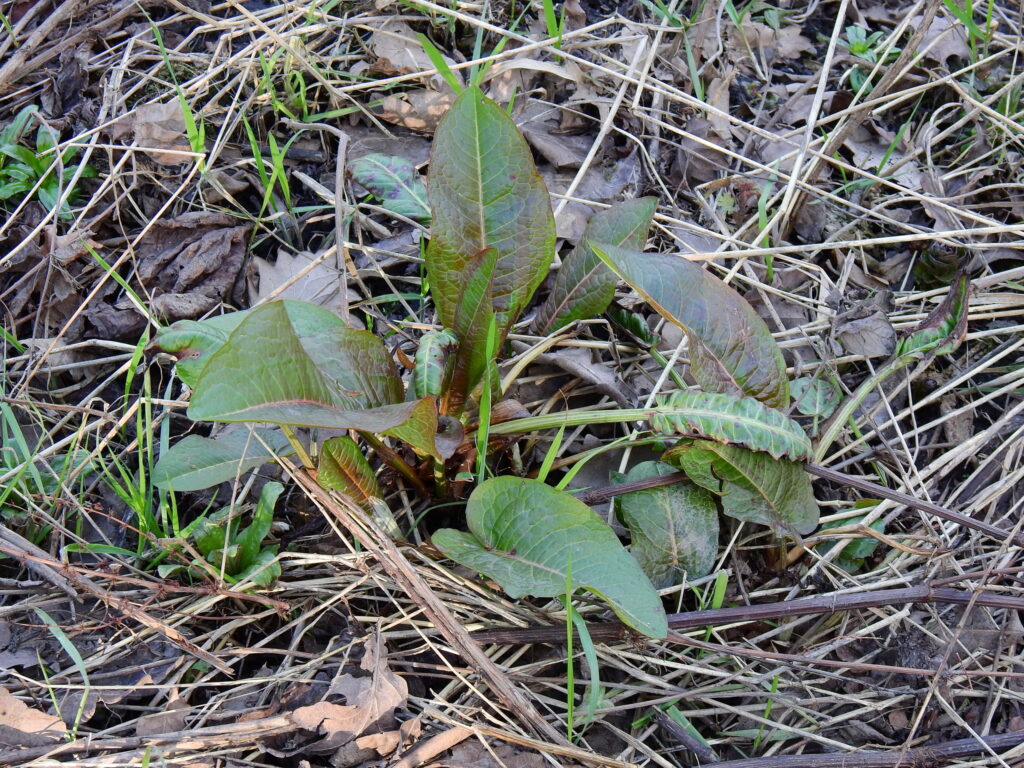
Susan Marley / Broad-leaved Dock
Identify Japanese Knotweed For Free
Do you still need to identify a plant on your property? If you’re unsure whether it’s Japanese Knotweed, we can help!
At Japanese Knotweed Survey, we offer a free identification service.
Email clear photos of the plant to our experts at [email protected] , and we’ll provide a professional assessment, often within the same working day.
Don’t wait—send your photos today for a quick and reliable identification to help you manage any potential Japanese Knotweed issues!
